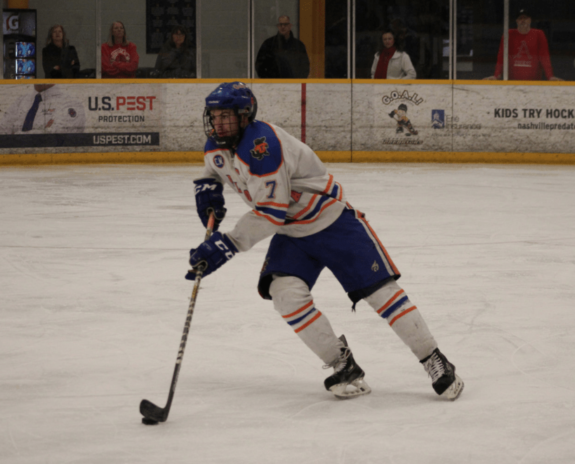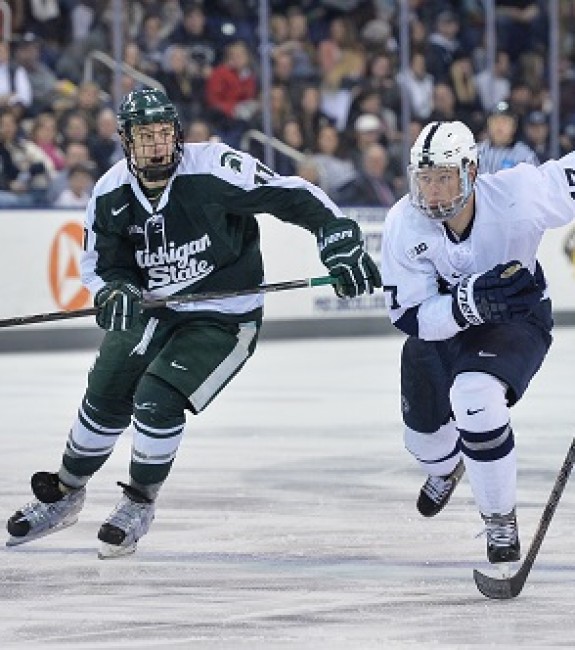Throughout North America, there has been a rapid growth in the number of junior hockey programs and leagues in the past decade. This growth has seen a boom of increased skill development and pathways to pro and college hockey for many prospects. At the end of the junior experience, players face the toughest of questions about “what’s next,” and, unfortunately, the growth of the NCAA College hockey has not followed the rapid growth of talent throughout the continent.
The American College Hockey Association (ACHA) was established in 1991 with 15 charter members. Fast forward to 2019 and there are now about 500 men’s and women’s ACHA programs throughout the United States. It is the fastest growing body of hockey in North America, and provides key growth for the sport in general, as many of its programs are in “non-traditional” hockey markets.
One can now see college hockey at prime time Friday night and Saturday slots at the University of Maryland, midnight sellouts at the University of Kentucky, huge crowds at Liberty University, and a big following out west for the Oregon Ducks. There are even local tournaments that emulate Boston’s famous Beanpot. One is the ‘Crab Pot’ tournament in Maryland, which draws big crowds and see great local rivalries between Towson University, the University of Maryland, The Naval Academy and Stevenson University.

The ACHA programs facilitate great growth in the sport. Look no further than the state of North Carolina, which has a solid fan base for the Carolina Hurricanes and also solid ACHA programs at North Carolina State, Duke, and the University of North Carolina amongst others. Games are often held at local ice rinks where students pack the stands in similar numbers to NCAA Division 3 programs.
“Club Hockey”
One of the biggest determinants that the ACHA faces is how many refer to it as “club hockey.” The term often diminishes the perceived level of play for many of the ACHA programs and some wrongly associate “club” with “intramural.” Most players in Division 1 and Division 2 ACHA programs have played junior hockey, and many others transfer from NCAA D1 or D3 programs for a variety of reasons, including playing time, seeking a particular academic program, etc…
Many of the larger NCAA schools, outside of the Big 10, do not offer NCAA hockey. The ACHA offers many players that graduate from top high school or junior programs the opportunity to play hockey and also have the “big campus college experience.” The ACHA is a highly-competitive platform and offers the opportunity of college hockey to many areas where NCAA hockey isn’t viable.
To illustrate how competitive ACHA hockey is, in Penn State’s transition year, when it moved from ACHA D1 to NCAA D1, they beat Michigan State’s NCAA D1 team. Penn State’s roster was comprised of many former ACHA players who had made the transition to NCAA with the Penn State program.
The Case Study of Penn State
Penn State hockey was founded in 1971 and they joined the ACHA as a founding member in 1991. Throughout the years, Penn State was always a powerhouse program in the ranks of ACHA programs. The success and support from both the administration and students facilitated the interest of Penn State alumni Terrence Pegula, and his donation built a state-of-the-art arena and facilitated the program’s jump from ACHA D1 to NCAA D1 in the 2012-13 season.
Their jump from top ACHA program to NCAA D1 program was a trailblazing path that was emulated a couple of years later by Arizona State, which also made the jump from ACHA to NCAA hockey. After Penn State joined the Big 10, other conference institutions have been reportedly been investigating adding NCAA D1 programs. It’s a list that includes The University of Iowa, The University of Illinois, (from ‘Illinois is in ‘the red zone’ for adding a Division I hockey program. And for top area players, it’s an if-you-build-it-we-will-come scenario,’ Chicago Tribune, 08/20/2019) The University of Nebraska and possibly The University of Maryland. All of these schools have solid ACHA programs and could follow Penn State’s path to NCAA D1 hockey in the coming years.

The bottom line is that the ACHA is a highly-competitive college hockey platform that has benefited the game of hockey in many respects. It affords students the opportunity to play college hockey in institutions that don’t offer NCAA hockey. It’s a venue that can be used as a trailblazer for colleges and universities wanting to add NCAA hockey, and it gives fans of the game an opportunity to cheer for their school in otherwise “non-traditional” hockey markets. In the Gary Bettman-era of expansion, the influence of ACHA hockey cannot be underrated as it has been a driving force of expanding hockey into new and exciting markets.